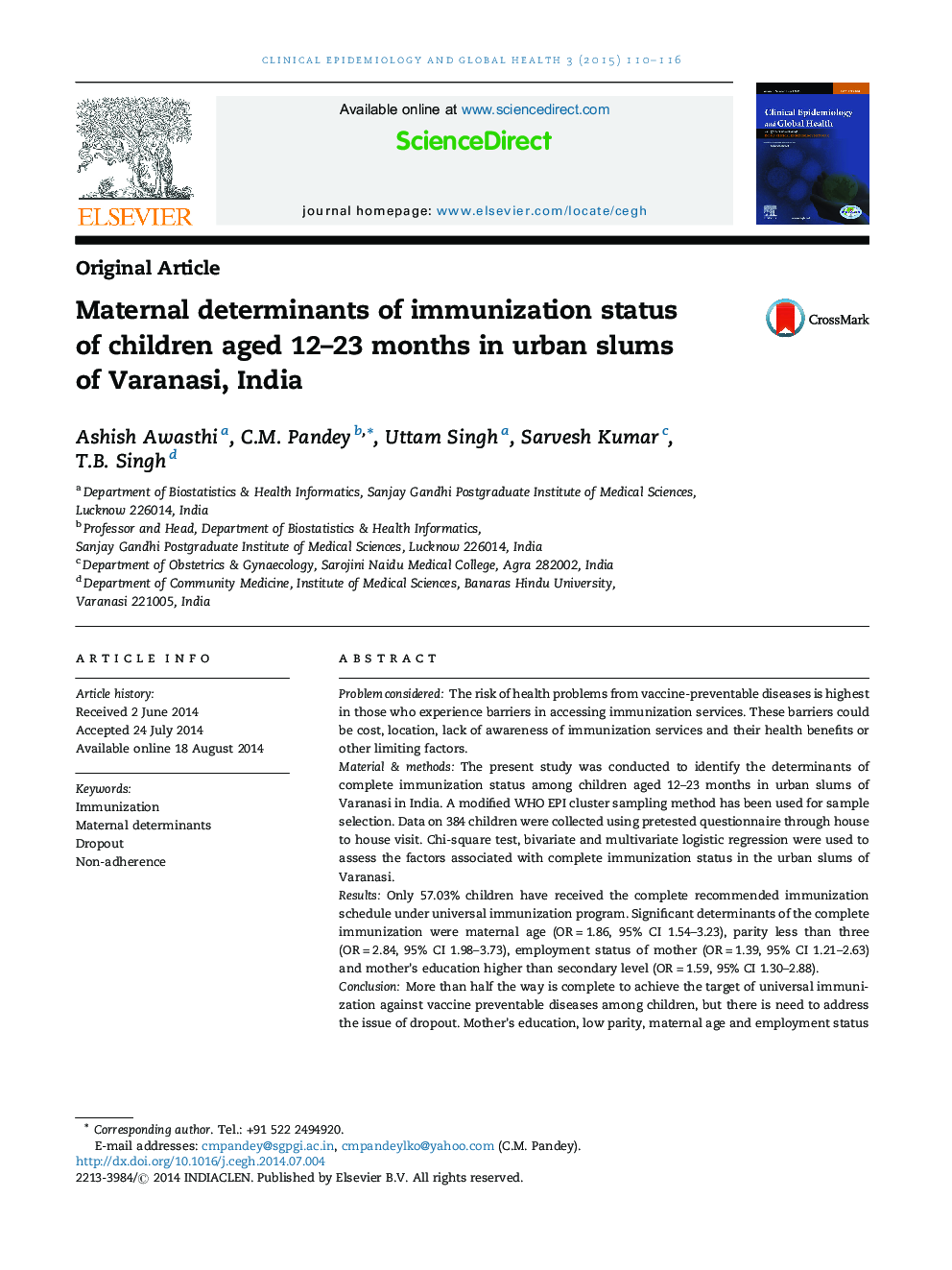| Article ID | Journal | Published Year | Pages | File Type |
|---|---|---|---|---|
| 3396294 | Clinical Epidemiology and Global Health | 2015 | 7 Pages |
Problem consideredThe risk of health problems from vaccine-preventable diseases is highest in those who experience barriers in accessing immunization services. These barriers could be cost, location, lack of awareness of immunization services and their health benefits or other limiting factors.Material & methodsThe present study was conducted to identify the determinants of complete immunization status among children aged 12–23 months in urban slums of Varanasi in India. A modified WHO EPI cluster sampling method has been used for sample selection. Data on 384 children were collected using pretested questionnaire through house to house visit. Chi-square test, bivariate and multivariate logistic regression were used to assess the factors associated with complete immunization status in the urban slums of Varanasi.ResultsOnly 57.03% children have received the complete recommended immunization schedule under universal immunization program. Significant determinants of the complete immunization were maternal age (OR = 1.86, 95% CI 1.54–3.23), parity less than three (OR = 2.84, 95% CI 1.98–3.73), employment status of mother (OR = 1.39, 95% CI 1.21–2.63) and mother's education higher than secondary level (OR = 1.59, 95% CI 1.30–2.88).ConclusionMore than half the way is complete to achieve the target of universal immunization against vaccine preventable diseases among children, but there is need to address the issue of dropout. Mother's education, low parity, maternal age and employment status of mothers are main factors associated with adherence of immunization schedule. It is necessary that interventions should be strengthened to minimize immunization dropout in the vulnerable children.
